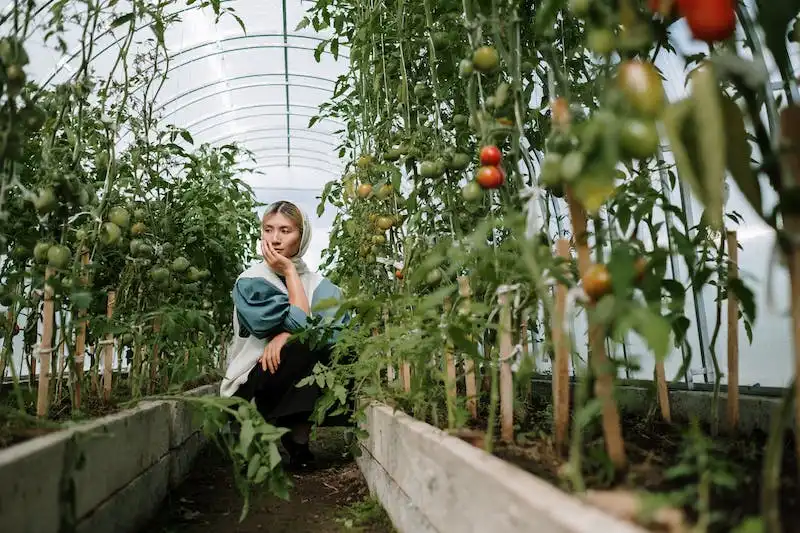Daylilies are beautiful perennial flowers that are easy to propagate and grow in your garden. There are several methods you can use to propagate daylilies, such as harvesting and planting the proliferations, collecting and sowing the seeds, or dividing the plant by its roots. In this article, we will learn how to propagate daylilies using these different methods.
1. Propagating Daylilies by Harvesting Proliferations
One of the easiest ways to propagate daylilies is by collecting the proliferations, also known as “offshoots” or “plantlets,” that grow from the base of the plant. These proliferations can be seen as small shoots that form around the main daylily plant. To start, identify a healthy proliferation and carefully cut it off from the main plant, making sure to keep the roots intact. Tip: Taking a photo of the daylily before you start can help you keep track of the colors and forms of each individual plant.
After you have harvested the proliferation, you can plant it in a pot or directly in the ground. Make sure to use well-draining soil and water the new plant regularly to keep it hydrated. Remember: Daylilies are hardy plants and can tolerate a wide range of growing conditions. They usually respond well to being transplanted, and you can expect them to start growing within a few weeks.
2. Propagating Daylilies from Seeds
Another method to propagate daylilies is by collecting and sowing their seeds. Daylilies produce seed pods after they flower, and these pods contain viable seeds. You can wait for the seed pods to dry on the plant or collect them when they are still green and allow them to ripen off the plant. After collecting the seeds, store them in a cool, dry place for a few weeks to help them harden.
When you are ready to sow the seeds, choose a location in your garden where the daylilies will receive ample sunlight. Prepare the soil by removing any weeds or debris and make small furrows or indentations. Sow the daylily seeds at a depth that is about twice the size of the seed itself and cover them lightly with soil. Water the seeds regularly to keep them moist. Note: It may take some time for the seeds to germinate, so be patient and wait for the first shoots to appear.
By using these simple techniques, you can easily propagate daylilies and enjoy the beauty of these perennials in your garden. Remember to choose the method that works best for you and the conditions of your garden, and soon you will have a colorful and thriving daylily collection.
Source: UF/IFAS Gardening Solutions
Daylily Propagation by Proliferation
If you are interested in propagating daylilies, one method you can use is called proliferation. This is a simple and reliable way to grow new daylilies from existing plants.
Daylilies are perennial flowers that can be easily propagated by proliferation. Proliferations are small plantlets that grow on the flower scapes or at the base of the plant. They can be identified by the presence of roots and shoots, which make them ready to be planted elsewhere.
To propagate daylilies by proliferation, follow these steps:
- Wait for the daylily to finish flowering. The best time to propagate is after the flowers have faded and about 4-6 weeks before the first frost.
- Collect the proliferations from the daylily plant. Gently remove them from the parent plant, making sure to keep the roots intact.
- Prepare the soil for planting. Make sure it is well-draining and has good fertility.
- Plant the proliferations at a depth of about 2 inches in the soil. Space them about 12-18 inches apart to give them room to grow.
- Water the newly planted proliferations thoroughly, and keep the soil consistently moist.
Over time, the proliferations will grow into mature daylily plants. They will produce flower scapes and eventually flower, just like their parent plant. This method of propagation is a great way to increase your daylily collection without having to buy more plants or sow seeds.
Keep in mind that not all daylilies produce proliferations, so this method may not work for all varieties. However, many daylilies do produce proliferations, making it a reliable and efficient way to propagate these beautiful flowering perennials.
If you are interested in learning more about daylily propagation by proliferation, there are many resources available online. The University of Florida IFAS Extension website, for example, has a wealth of information on this topic. You can also find helpful tips and solutions from other gardening websites and forums.
Propagation by proliferation is a great way to grow more daylilies and explore different varieties in your garden. Give it a try and enjoy the beauty of these vibrant and long-flowering plants!
Daylilies
Daylilies, also known as hemerocallis, are beautiful flowering perennials that are popular in gardening. They are easy to propagate and can be grown from seed or through other methods such as division and tissue culture.
One of the simplest ways to propagate daylilies is by collecting and sowing seeds. After the daylilies flower, they produce seed pods that contain viable seeds. It is best to wait until the seed pods start to turn brown before harvesting them. After harvesting, the seeds can be sown directly into the soil at a depth of about two times their own size. They should be kept moist and will usually germinate within a few weeks.
Another method of propagating daylilies is through division. This involves splitting up a mature daylily plant into smaller plants, each with its own set of roots and shoots. To do this, dig up the daylily in spring or fall, being careful not to damage the roots. Then, separate the clumps into smaller sections using a sharp knife or garden spade. Each new section can be planted as a new daylily plant.
Daylilies can also be propagated through proliferations. These are small plantlets that develop on the scapes, or flower stalks, of the daylily. To propagate through proliferations, wait until the plant has finished flowering and the stalks have started to die back. Then, carefully remove the proliferations and plant them in a container filled with moist soil. Keep the container in a warm, well-lit area, and the proliferations will usually start to grow roots within a few weeks.
Overall, daylilies are a versatile and easy-to-grow plant that can be propagated in several ways. Whether you choose to start from seed, divide existing plants, or use proliferations, daylilies offer a variety of solutions for adding more of these beautiful flowers to your garden.
Source: UF/IFAS Extension, “How to Propagate Daylilies.”
Propagating Daylilies
Daylilies are perennial plants that can easily be propagated and grown in your garden. There are several ways to propagate daylilies, including through dividing the plant, harvesting seedlings, and using proliferations. Here’s how you can propagate daylilies:
- Dividing the plant:
- Gather a sharp knife or spade.
- Choose a point around the base of the plant where you can make a clean cut.
- Carefully dig around the plant, making sure not to damage the roots or scapes.
- Once the plant is out of the soil, separate it into two or more sections, each with its own set of roots and shoots.
- Replant the sections in well-drained soil, making sure to water them regularly until they establish themselves.
- Harvesting seedlings:
- Wait for the daylilies to finish flowering and the seed pods to ripen.
- Cut off the seed pods and place them in a paper bag.
- Keep the bag in a warm, dry place for a few weeks to allow the seed pods to fully dry.
- After the seed pods are dry, open them to collect the seeds.
- Sow the seeds in pots or directly into the soil, making sure to cover them with a thin layer of soil.
- Water the seeds regularly and wait for them to germinate and grow into seedlings.
- Using proliferations:
- Look for small plantlets, called proliferations, that grow at the base of the daylily plant.
- Cut off the proliferations, making sure to keep a small portion of the main plant attached.
- Plant the proliferations in well-drained soil and water them regularly.
- Wait for the proliferations to establish themselves and grow into new daylily plants.
These are some of the methods you can use to propagate daylilies. Each method has its own advantages and disadvantages, so choose the one that works best for you and your gardening needs. With proper care and attention, your daylilies will continue to thrive and add beauty to your garden for years to come.
Also on Gardening Solutions
If you’re interested in learning more about propagating daylilies, there are many resources available to help you. You can start by visiting websites like UF/IFAS Gardening Solutions, where you can find more information about the different methods of propagation.
One simple way to propagate daylilies is by collecting and planting the seeds. After the flowers have finished blooming, wait for the seed pods to dry out and turn brown. Then, harvest the seeds and plant them in a well-draining soil. Keep the soil consistently moist and the seedlings should start growing in a few weeks.
Another method of propagation is through division. Daylilies can be divided every three to five years, usually in early spring or fall. Dig up the plant and separate the roots into smaller clumps. Replant the divisions, making sure to plant them at the same depth as the original plant.
In addition to seeds and division, you can also propagate daylilies through proliferations. These small plantlets, also known as “pups” or “offshoots,” grow on the scapes above the main plant. Carefully remove the proliferations and replant them in a separate area. With time and proper care, they will grow into mature plants.
When propagating daylilies, it’s important to remember that not all plants will produce viable offspring. Some daylilies are hybrids, and their seeds may not produce plants with the same characteristics. If you want to ensure that your new plants will have the same traits as the parent plant, it’s best to propagate through division or proliferations.
Propagation can be done at different times of the year, but it’s usually best to wait until after the daylilies have finished flowering. This way, you can enjoy the flowers while still allowing the plant enough time to recover before the next growing season.
To learn more about daylily propagation, including tips for collecting and storing seeds, visit UF/IFAS Gardening Solutions website or consult other reliable gardening sources. There you will find more detailed information on the various methods and techniques for propagating daylilies.



